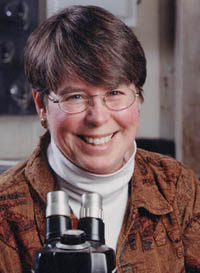
- Francl Group Website: http://www.brynmawr.edu/chemistry/mfrancl.html
- It is now possible for chemists to routinely probe questions of chemical structure and reactivity without recourse to a traditional laboratory. Advances in theoretical and computational chemistry have enabled chemists to extract reliable answers from calculations for many systems. As the power of these methods to make substantial contributions to organic, inorganic, and biochemical research grows, so does the demand for new theoretical approaches. My research group is engaged in both developing new methods for studying chemical systems using computational approaches, as well as in the application of theoretical models to problems of interest in organic, inorganic and biological systems.
The mere ability to accurately calculate the structures of complex molecules in not always entirely satisfying. A true grasp of the chemistry requires an understanding of the intrinsic structural and physical factors that govern structure. A case in point are the [n]mobiusenes, condensed aromatic molecules which mimic Moebius strips. Larger molecules are less strained than their smaller counterparts, but all show a counterintuitive localization of the twist. One imagines that the molecule would be less strained if the twist were distributed evenly around the molecule. What is the impetus for the localization? What are the consequences for the molecular reactivity? The answers to these questions can be found by mixing computational chemistry with a dash of topology and a generous dollop of differential geometry. My research group is taking an interdisciplinary approach to this and related problems.

